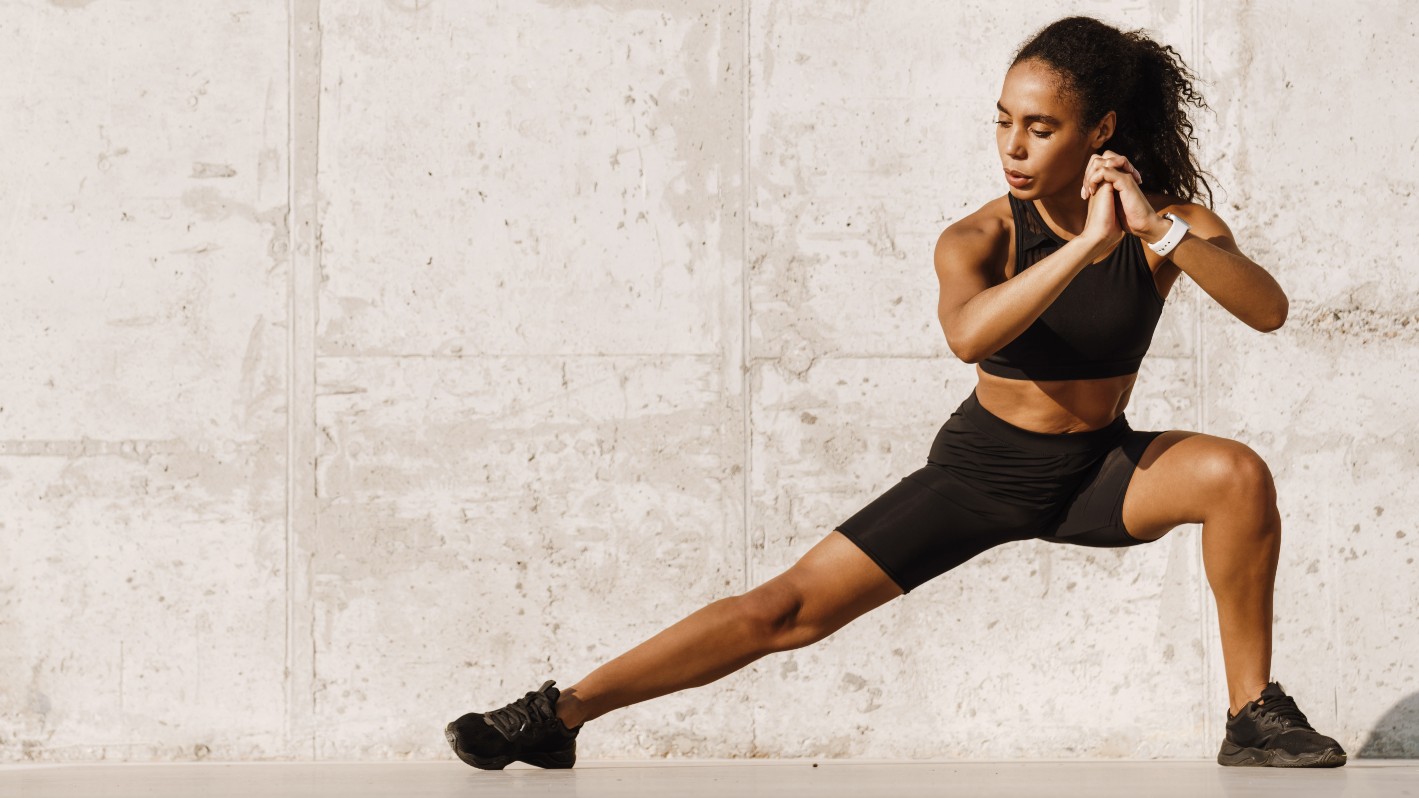Best HIIT workouts for beginners you can do at home with or without weights
These are the best high-intensity workouts you can do at home

HIIT is an abbreviation for High-Intensity Interval Training and whether or not you are a total newbie to the workout format, it’s beginner-friendly and a highly efficient way to burn calories and build strength in a short amount of time.
This style of workout involves alternating between bursts of high-intensity exercise with brief periods of recovery; it's one of the top cardio exercises that burns more calories than running. HIIT exercise can also improve your cardio health, boost your metabolism and improve muscular strength and endurance.
Ready to give a beginner-friendly HIIT workout a go? With special advice from Mecayla Froerer, director of training for iFit, we've got a whole mix of HIIT workouts for you to try out. Before you get stuck in, we highly recommend investing in one of the best yoga mats to roll out while you work out.
Before diving headlong into one of these HIIT workouts, you’ll want a good warm-up under your belt. Don’t forget to drink plenty of water in between sets/circuits, and stretch as necessary.
Remember to pay close attention to overall form as you transition from one exercise to another. As you get used to this style of workout, you’ll find a smooth flow between these fundamental calisthenicsfind the right warm-up sequence that works for you.
Beginner HIIT Workout 1: Running (31 minutes)
- 30-second push / 90-second recovery (repeat 8 times)
- 30-second push / 60-second recovery (repeat 6 times)
- 30-second push / 30-second recovery (repeat 4 times)
- 30-second push / 15-second recovery (repeat 2 times)
HIIT-style running workouts comprise short 30-second bursts of sprinting interspersed with a rest period, which decreases as you progress through the workout. During the high-intensity part, you want to crank your heart rate up to 80 percent of its maximum capacity. After each push, take your pace down to a brisk walk while you catch your breath.
According to iFit’s Froerer, “On a scale of 1 to 10 [for effort], pushes should be around an 8 to 10. You should feel breathless, not able to hold a conversation, and can only say a word or two at any given time. If you want to make [the workout] more challenging, add incline or resistance with each push.” This last part requires a treadmill if you're a city-dweller.
Get instant access to breaking news, the hottest reviews, great deals and helpful tips.
During those 30-second pushes, pay close attention to your running form; keep your shoulders down and relaxed; your head upright; your knees high; your arms loosely held at right angles (fists unclenched); and your feet landing underneath your body with every stride. Practice makes perfect, and in the long term, improper form is a potential injury waiting to happen.
Inspired? Take a look at our treadmill workouts for every level of runner here.
Beginner HIIT Workout 2: Cycling (34 minutes)
Speed Focus / Quick Cadence (repeat 2 times)
- 1-minute push in saddle / 3-minute recovery
- 1-minute push out of saddle (ie, standing up) / 3-minute recovery
Resistance Focus / Slow Cadence (repeat 2 times):
- 1-minute heavy watts in saddle / 3-minute recovery
- 1-minute heavy watts out of saddle (ie, standing up) / 3-minute recovery
Choice of Speed or Resistance Half-Tabatas (repeat 4 times):
- 20 second push / 10 second recovery
Cycling is another HIIT mainstay. You can use any exercise bike (see our picks for the best exercise bikes), and you can also incorporate HIIT into any neighborhood bike ride, too. This beginner cycling routine gets you in and out of the bike saddle (ie, standing up vs. sitting down), which brings the pain to your quads, calves, and glutes — and how. During each high-intensity push, crank your bike up to the highest gear you can handle for 60 seconds, then dial the resistance back for each recovery period. When done properly, your shoulders and core will be feeling the burn, too.
Bonus tip: Keep the bike pedals near your toes to put more emphasis on your calves, or closer your heel to emphasize the glutes/quads. Mix it up accordingly, depending on your fitness goals.
Beginner HIIT Workout 3: Elliptical (20 minutes)
- 20-second push / 40-second recovery (repeat 8 times)
- 30-second push / 30-second recovery (repeat 8 times)
- 20-second push / 10-second recovery (Tabata) (repeat 8 times)
Similar to treadmills, many ellipticals have adjustable incline settings to simulate hilly terrain; higher inclines put more focus on your calves and glutes, similar to stair-stepping machines.
Ellipticals have skyrocketed in popularity over the past year, and they’re an excellent cross-training option for anyone with arthritic joints or back issues. (Since your feet never leave the footrests, your back, hips, and knees get much more stabilization during each workout).
Beginner HIIT Workout 4: Bootcamp / Home Gym (25 minutes)
Circuit 1: 30 seconds of work; 15 seconds of rest (repeat 3 times)
- Push-ups
- Tricep dips
- Jumping jacks
~ Rest 2 minutes ~
Circuit 2: 30 seconds of work; 15 seconds of rest (repeat 3 times)
~ Rest 2 minutes ~
Circuit 3: (30 seconds of work; 15 seconds of rest (repeat 3 times)
One of the best things about HIIT workouts is their refreshingly low cost of entry. For example, your favorite sneakers, sports shorts, and a comfy tank top is all you really need to jumpstart that new HIIT running routine; your own body weight takes care of the resistance.
As you transition between exercise, look for natural movements that flow smoothly from one motion to the next (not unlike yoga). HIIT is all about getting as much work done in the shortest possible amount of time, and wasted movements means wasted work.
More from Tom's Guide
- 9 of the best free Tabata workouts on YouTube
- Best beginner HIIT workouts you can do at home
- Try these 8 best 30-minute workouts to build muscle and strength and burn calories

As a freelance journalist, TJ has over a decade of multi-medium storytelling under his belt. Leveraging a quarter century of collective coddiwompling amid the ever-evolving landscape of wireless gadgetry, his unique editorial background allows him to explore a variety of tech-centric subsectors on this fascinating planet. When he's not field testing new gear in the Catskills, Adirondacks, or an actual field, he can be found sipping Negronis in his living room and crafting Dr. Seussian poetry inside a tattered moleskin.
- Jessica DowneySenior Fitness Writer
- Sam HopesFitness Editor and Coach


